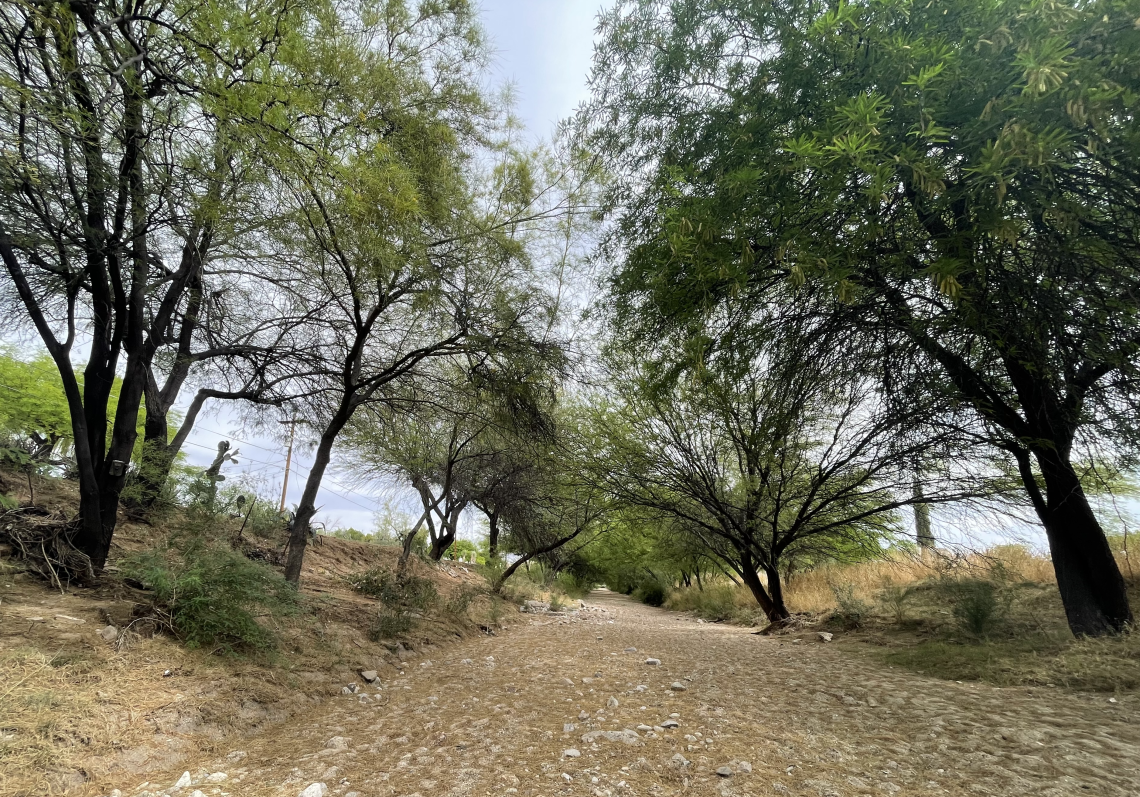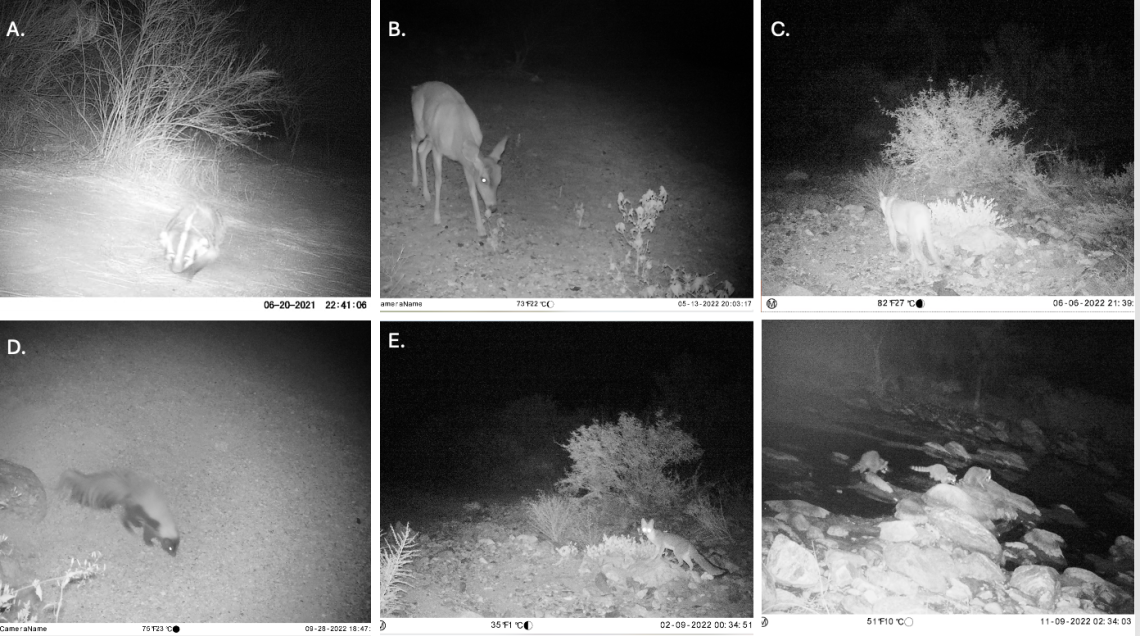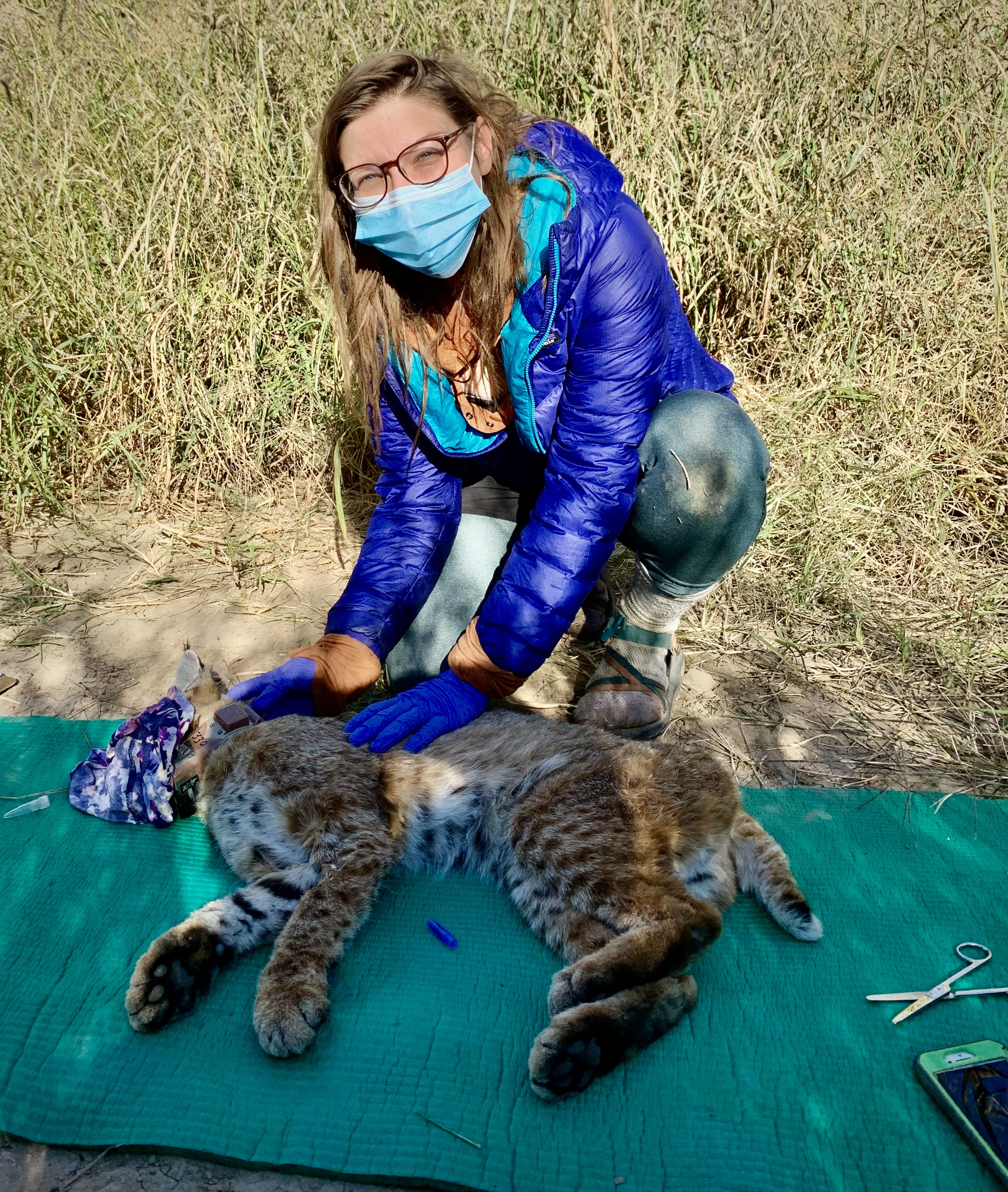Congratulations to Allie Burnett on her successful defense!
Congratulations to Allie Burnett on her successful defense of her PhD project studying human-wildlife relationships in Tucson, Arizona.
Burnett deployed wildlife cameras to characterize riparian corridor use by mammals in and around Tucson. She also distributed a public survey to evaluate public attitudes toward species of concern and assess effectiveness of strategies used by residents to deter wildlife. Because many residents voiced concerns about bobcats attacking their pets and livestock, Burnett additionally ran a diet analysis comparing rural bobcats with suburban bobcats in Tucson to determine whether urbanization affects bobcat diet.
IMG_5792.png

Burnett found that a large variety of mammals use dry riverbeds (locally referred to as “washes”) in and around Tucson, AZ. We saw 67 species total, including 26 species of mammals and 34 species of birds! These riverbeds are used by mammals for foraging and hunting, resting, and traveling. Cameras near the outskirts of the city showed mountain lions, mule deer, white-tailed deer, badger, four different skunk species, gray fox, and more. Suburban cameras showed mammalian communities largely similar to those of exurban cameras, retaining cottontails, antelope squirrels, bobcats, javelina, and coyote. However, many species were negatively affected by human disturbance, including human presence and high densities of pavement or buildings. The most urban camera images were dominated by humans and feral cats, with the occasional coyote or peccary moving through. Restoration of natural habitat around these corridors (for example, a buffer zone of 1km between the corridor and the city) and designated walking trails adjacent to washes could alleviate these effects and increase public accessibility to nature.
Burnett_speciesdiversity.png

She also distributed a survey to Tucson neighborhood associations. Although some residents did attempt to deter wildlife, the vast majority of participants did not deter wildlife they observed on their property and attitudes were largely positive. She further found that residents that attempted to deter wildlife from their yard experienced the best success when using strategies that adhere to the animal’s ecology – for example, using barriers to deter coyote and javelina, but not bobcats, who are good climbers. Finally, Burnett found that the diet of suburban bobcats consisted primarily of rabbits and birds. Bobcats may attack pets and livestock on rare occasions, however, they are not a primary prey item for bobcats in either suburban or rural environments.
Burnett’s findings help inform local land and urban wildlife management, emphasizing the use of natural habitat and natural prey items by urban wildlife and underscoring the potential importance of washes for native mammals facing urbanization. Her results additionally provide empirical support for strategies that can be used by residents to deter wildlife. Burnett is actively working with Pima County, Arizona Game and Fish, Saguaro National Park, and local non-profits to share her findings and develop strategies for conserving wildlife in and around Tucson.
Burnett_focalspecies.png



